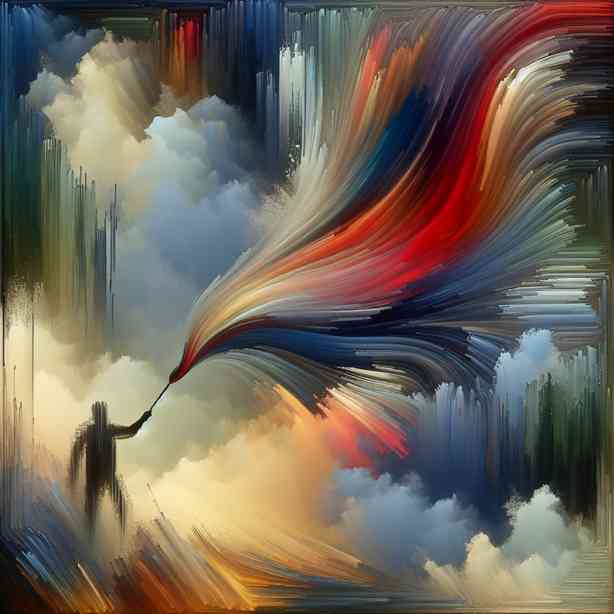
Stroke You Made With Your Eyes Closed
In our ever-busy lives, we often find ourselves overwhelmed by the constant stream of information and experiences surrounding us. The phrase “the stroke you made with your eyes closed” evokes a profound sense of introspection and reflection on the unintended impacts of our actions. It denotes the moments in which we operate on autopilot, where we move through life without fully engaging our awareness. This topic provides fertile ground for exploration, as it intertwines themes of mindfulness, creativity, and the essence of human connection.
At its core, the concept invites us to consider the ramifications of actions taken without full awareness. Whether it’s in our interpersonal relationships, our work, or even in the creative process, the strokes we make—intentional or not—carry significance. In creative fields, artists often embrace spontaneity, allowing their subconscious to guide their hands. However, the question remains: how do these unguarded moments influence the final outcome? This serves as a reminder that the beauty of spontaneity lies in its unpredictability, as it often leads to unexpected discoveries.
Moreover, the metaphor can extend beyond the realm of creativity into our everyday lives. Many individuals operate within routines, performing tasks without deeply engaging with their feelings or the surrounding environment. This disconnection can result in missed opportunities for meaningful connections. When we move through life with our eyes closed, we might bypass the moments that could enrich our experiences and relationships. It becomes crucial to cultivate a practice of mindfulness, bringing intentionality to our daily actions.
Mindfulness encourages us to be present in each moment, fostering a deeper awareness of our surroundings and ourselves. It allows us to recognize the beauty in simplicity—a moment spent enjoying a sunrise, savoring a cup of tea, or engaging in conversation with a loved one. By opening our eyes—metaphorically— we reclaim our agency, ensuring that our strokes are deliberate and impactful. This shift brings forth a sense of fulfillment, enhancing not just our individual experiences but also those of the people around us.
In examining the strokes we make with our eyes closed, it is essential to acknowledge the importance of reflection. After taking action, whether it is an interaction with others or a creative expression, reflecting on those moments can reveal insights that were initially obscured. What was driving our actions? Was there an underlying emotion or intention that we failed to recognize? Reflection enables us to engage with our experiences more fully, cultivating growth and deepening our understanding of ourselves and others.
Furthermore, it is essential to consider how our actions influence those around us. The strokes made in unguarded moments can leave lasting imprints on relationships, shaping how others perceive and interact with us. This aspect of our actions underscores the need for intentional engagement. When we approach our interactions with mindfulness, we not only enhance our experiences but also contribute positively to the lives of others. It’s a reminder that every action, even those taken with our eyes closed, resonates beyond ourselves.
As we cultivate greater awareness, we also invite vulnerability into our lives. Being mindful encourages us to embrace our imperfections, recognizing that mistakes and missteps are integral to the human experience. This vulnerability can foster authentic connections with others, inviting them to share their experiences and feelings. Consequently, we create spaces for deeper dialogue, understanding that we are all navigating through our own strokes, some more intentional than others.
In the realm of artistry and creativity, the magic often lies in the tension between intention and spontaneity. Artists frequently explore this dynamic, balancing the control of technique with the freedom of expression. The strokes made when eyes are closed can be seen as a metaphor for unfiltered creativity—an exploration of the self without constraints. Allowing oneself the freedom to create without judgment can lead to unexpected breakthroughs and innovations, reinforcing the notion that sometimes, the most profound art comes from moments of pure instinct.
Moreover, this phenomenon can extend to collaborative efforts, where the synergy of different perspectives can yield remarkable outcomes. When team members or collaborators operate from a space of openness, they may tap into collective creativity, resulting in strokes that enrich the work far beyond individual contributions. Embracing this collaborative spirit fosters an environment where ideas can flourish, and innovation thrives—highlighting the importance of shared vision and the power of community.
In conclusion, the notion of “the stroke you made with your eyes closed” serves as a powerful metaphor for examining how we engage with and navigate our lives. It challenges us to reflect on our actions, embrace mindfulness, and nurture the courage to be vulnerable. As we make deliberate strokes in our relationships and creative endeavors, we can find beauty and meaning in both our intended actions and our unguarded moments. By opening our eyes—both literally and metaphorically—we can enrich our experiences, foster connections, and inspire creativity, ultimately leading to a more fulfilling existence. The journey of self-discovery and connection begins with conscious awareness, allowing us to paint the canvas of our lives with intention and depth. Each stroke, whether seen or unseen, contributes to the greater narrative of who we are and what we create in this shared human experience.


